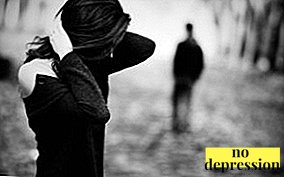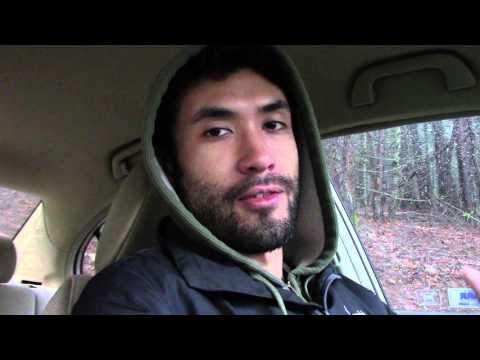Creative abilities may be congenital and acquired.
Thinking how to develop creativity, will help the advice of psychologists.
Basic definitions

Creative - what does this mean? What is creativity in psychology?
Word "creativity" derived from creatio - from Latin - creation. This is a readiness for new ideas, creative abilities of the individual.
P. Torrens believed that this is an increased sensitivity to problems. But besides this, some actions are carried out to identify problems and find solutions. It is necessary to put forward hypotheses, test them and formulate.
Creativity activated when the environment allowsin which there is a child or an adult.
Creativity is a property of each individual, but for the majority it is in an inactive state.
It is also the ability to think outside the box in a variety of situations - not only in creativity, but also in solving business problems.
It is often regarded as the opposite of the standard, ordinary thinking.
Psychological portrait of a person
A creative person, a creative person, a creative person - what is he like? Creative person knows how to think outside the box. Sometimes his ideas really surprise, cause misunderstanding on the part of society.
A person with creative thinking is able to create a new, different from the standard approach, while his decisions often show their practicality and benefit.
Signs of creative personalities:
- They can dream. They have a well-developed imagination. Often they have imaginary worlds. This does not mean that they are in the clouds and do nothing, on the contrary, they try to express their ideas without.
- They are both introverts and extroverts. A person with standard thinking, according to research scientists, has one of the poles of personality. Creative people are endowed with features of both types. They can simultaneously manifest sociability and secrecy. Other people become the cause of inspiration, and they prefer to think over new ideas in a calm place and in solitude.
- Creative people are not tied to hard gender stereotypes, they have a freer thinking and a manifestation of their role.
Girls with creative abilities are more dominant in behavior than their peers with everyday thinking.
- In general, they exhibit conservatism. But under certain conditions they can go against the system. They are ready to create new things, but at the same time they respect cultural traditions and can take much from the experience of the past.
- They are passionate about what they do.. They need a lift, emotions, otherwise creativity does not work. At the same time, they show objectivity and are able to criticize the results of their work.
- Creative people possess greater sensitivity and openness. They, as a rule, have a good mood, they are able to rejoice in the surrounding world, in communication with other people.
- They have to exist in two worlds - the imaginary and the real. The real is designed to solve everyday issues that do not always like a creative person. That is why around her often chaos, but orderly. The imaginary world helps to create, create ideas.


Ability Description
Creative ability is skills to create something new. They are associated with features of the nervous system, the speed of transmission of nerve impulses, the processes of excitation and inhibition.
But it is not only innate qualities. At the heart of creative abilities and long work. In many respects it is important that their development should be given attention in childhood.
Creation - this is not only the ability to present, but also the ability to express an idea, to create it, that is, it is not only the spiritual, but also the practical side.
Thinking methods

What is creative thinking, creative thoughts?
Creative thinking can be described as ability to be creative in solving any problem.
The ability to think and act outside the box allows you to stay ahead of competitors, create bright, original things.
Creative thinking is necessary in advertising, marketing, business, art. However, it is useful in any other area of human life.
To create a new technique, it is also necessary to think in non-standard categories, to be able not only to develop the device, but also to imagine what it should be and what functions to perform.
Developed methods that help manifest creativity:
- Brainstorm. The most popular method used in various areas. Participants are invited to make as many decisions as possible, no matter how unreal they seem.
Invented Alex Osborne - one of the founders of the advertising company. The voiced ideas are then developed; the association method is used for this.
- Synectics. The basis is the construction of analogies.
- Test questions. They help to direct the process of generating ideas. The method is based on correctly posed questions.
- Morphological analysis. A table is compiled where all interesting parameters are entered.
- Focal objects. Signs of randomly taken objects are attached to a given object.
- Mental maps. Tony Buzan suggested drawing mind maps that allow you to quickly find a solution. In the center of the sheet is drawn the main task, and on the sides of the association to it.
- The six hats method. Designed by Edward de Bono. The task, the problem is viewed from different angles, and the author proposes to “try on” six areas of thinking: a scientific approach, a critical assessment of the situation, an optimistic view, an emotional assessment of the situation, non-standard, management.
- Wallace method. According to him, tension is first required, then a departure from the problem, abstraction and insight. At the end, the data is checked and calculated.

Criteria of the creative process
The following criteria for creativity were identified:
- Originality - the ability to produce unusual ideas that are different from those already created. The better it is developed, the faster standard patterns are overcome. Originality is enhanced by the development of imagination.
- Flexibility - the ability to switch between thoughts, ideas, use several ways, options to realize them.
- Fluency - speed, the ability to generate a large number of ideas in a certain time period, while also the ability to quickly find the right solution.
- Openness - the ability to perceive new information from external sources and use it.
- Imagery - ideas are created in the form of images, while they are going into something single.
- Verbality - expressing ideas in words, the ability to explain what is required to be done, in what ways it is better to achieve.
This also includes the ability to defend your idea for its implementation.
- Stress resistance - ability to come in handy when you have to create ideas in a complex, unusual environment.
- Abstraction - holistic, complex ideas are formed on the basis of separate parts, after which they are collected into a single whole.
- Susceptibility - in the usual situation, you can find something unusual, different from the templates, you just look for the complex in the simple.
- Satisfactory - total. If the result is not satisfactory, then the further desire for creativity may disappear.

Diagnostics

The first tests to diagnose creativity were developed. Guilford.
They measured divergent thinking, were intended for adults and high school students.
Now advanced techniques are used, for example, Torrens.
Technique Vartega is that it is necessary to draw objects or phenomena, and circles are used as the basis. We study the fluency, flexibility and originality of thinking.
Express questionnaire Johnson. Identifies eight characteristics of creative behavior. According to the author of the technique, creativity manifests itself spontaneously and unexpectedly.
Test "Creativity" Vishnyakova. Two images are compared: "I am real" and "I am perfect."
Torrens technique
P. Torrens in 1962 offered a test for creativity. Diagnosis of creativity can do with preschool age. For boys and adults created a sophisticated version.
He developed 12 tests. They are grouped into pictorial, sound and verbal batteries.
Figure test suggests to draw a picture on the basis of an oval, complete the figures, create a non-repeating pattern, using the same lines as the basis.

5 indicators are investigated:
- fluency;
- originality;
- development;
- circuit resistance;
- abstract names.
Techniques
There are techniques to help improve the creative process and develop their creativity:
- Self-analysis. Assess your strengths and weaknesses. It is more convenient to perform in the form of a table.
- Environmental analysis. The situation, risks, solutions are evaluated.
- Expanding prospects. The problem is viewed from different angles. For example, ask a question on behalf of the secretary, doctor, deputy.
- Chain of ideas. One participant names the idea, another offers a different vision based on the idea of the previous one.
- Randomly selected words. The first available word is taken and associations are made up.
- Template method. Parameters are set and ideas are generated in accordance with them.
- Present the object in another quality. Take the ball and think about how it could be used. Or, for example, if your car was an airplane.
How to be creative?

How to become creative? How to develop creativity?
Creative abilities can be developed. It is possible even in adulthood.
Methods and techniques for the development of creativity:
- Forget about restrictions and rules. If you are creating something new, then the concepts of “impossible”, “impossible” should not arise.
- Put boundaries. One of the interesting tricks. Put yourself in a certain frame. For example, during the month draw only with black pencil.
- Use less equipment. If you take a photo, use the minimum number of lenses. For drawing, use one brush.
- Create as many different impressions as you can.. Visit new places, learn new information.
- Surround yourself with creative people - the desire to create is transmitted through social interaction.
- Train thinking. Tell stories. Do not think about how well you are doing, allow yourself to say what you like. Change the intonation in the process of the story.
- Change. Try yourself in different genres. Change the image. Write in different styles.
- Set yourself non-standard tasks.make the brain solve them.
- Do not wait for inspirationit may not come.
Begin to work, and creative abilities will begin to unfold in the process of activity.
- Concentrate not on the result, but on the methods of action.. Think about how you could solve the problem, by what methods.
- Choose an atypical place to work. Got used to create in the office - go to a cozy cafe or park.
- Use for some cases not only with your right, but also with your left hand - write, draw, eat.
- Let the brain take a break from emotional stress - meditations, trips in nature, time in complete silence without a TV and computer.
- Exercise, move more - The brain needs oxygen to be effective.
Creative abilities - this is not only the innate qualities of the psyche, but also a long work on oneself. Therefore, creativity can be developed using various techniques.
Exercises for the development of creativity:



